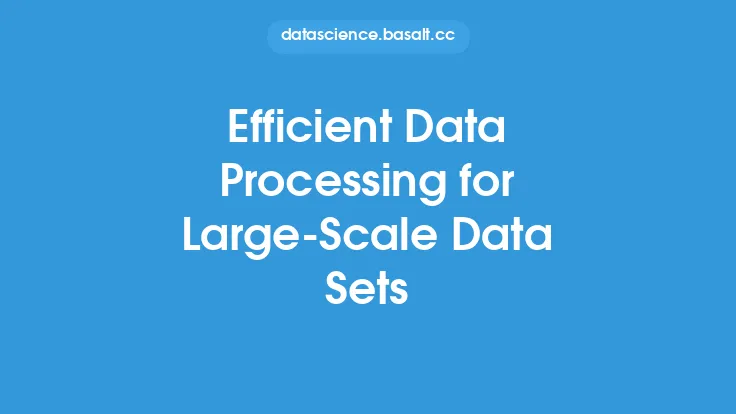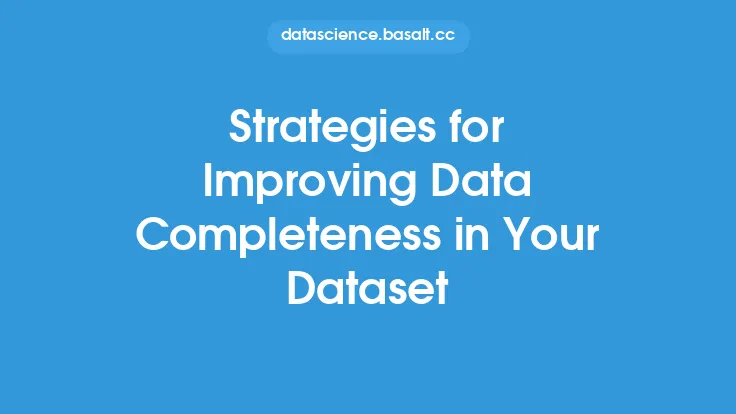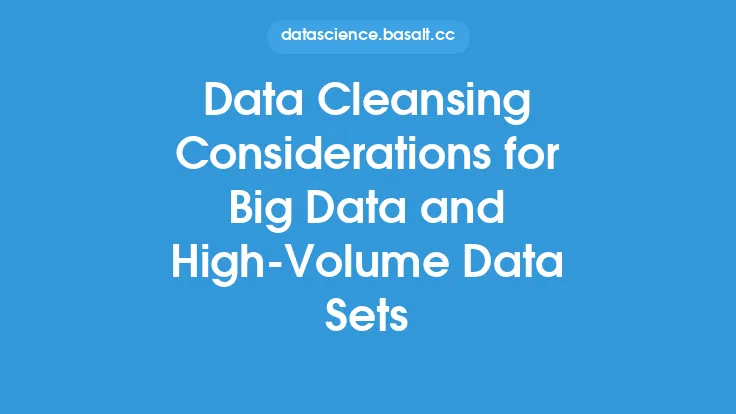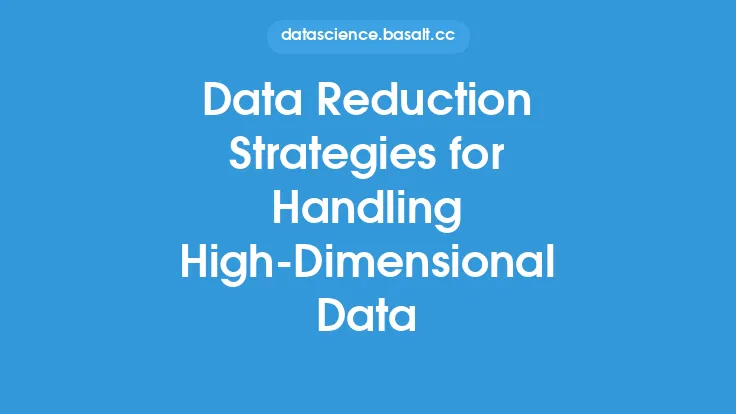Improving data accuracy in large-scale data sets is a crucial aspect of data quality, as it directly affects the reliability and usefulness of the data. Large-scale data sets, which are characterized by their massive size and complexity, pose unique challenges when it comes to ensuring data accuracy. In this article, we will explore the strategies for improving data accuracy in large-scale data sets, highlighting the key techniques, tools, and best practices that can help organizations achieve high-quality data.
Introduction to Data Accuracy Challenges
Large-scale data sets are often plagued by data accuracy issues, which can arise from various sources, including data entry errors, data integration problems, and data processing mistakes. These issues can have far-reaching consequences, including incorrect insights, poor decision-making, and compromised business outcomes. To address these challenges, organizations must implement robust strategies for improving data accuracy, which involve a combination of data validation, data cleansing, and data quality monitoring.
Data Validation Techniques
Data validation is a critical step in ensuring data accuracy, as it involves checking the data for errors, inconsistencies, and invalid values. There are several data validation techniques that can be used, including data type validation, range validation, and format validation. Data type validation checks that the data conforms to the expected data type, such as numeric or string. Range validation checks that the data falls within a specified range, such as a date or a numeric value. Format validation checks that the data conforms to a specific format, such as a phone number or an email address. These techniques can be implemented using various tools and technologies, including data validation software, scripting languages, and data quality frameworks.
Data Cleansing Methods
Data cleansing is another essential step in improving data accuracy, as it involves correcting or removing errors, inconsistencies, and invalid values from the data. There are several data cleansing methods that can be used, including data normalization, data transformation, and data standardization. Data normalization involves converting the data into a standard format, such as converting all dates to a uniform format. Data transformation involves converting the data from one format to another, such as converting numeric values to categorical values. Data standardization involves standardizing the data to a common format, such as standardizing addresses or phone numbers. These methods can be implemented using various tools and technologies, including data cleansing software, data quality frameworks, and data transformation languages.
Data Quality Monitoring
Data quality monitoring is a critical aspect of improving data accuracy, as it involves continuously monitoring the data for errors, inconsistencies, and invalid values. There are several data quality monitoring techniques that can be used, including data profiling, data auditing, and data quality metrics. Data profiling involves analyzing the data to identify patterns, trends, and anomalies. Data auditing involves checking the data for errors, inconsistencies, and invalid values. Data quality metrics involve measuring the data quality using metrics such as accuracy, completeness, and consistency. These techniques can be implemented using various tools and technologies, including data quality software, data monitoring frameworks, and data analytics platforms.
Data Governance and Stewardship
Data governance and stewardship are essential aspects of improving data accuracy, as they involve establishing policies, procedures, and standards for data management. Data governance involves establishing a framework for data management, including data quality, data security, and data compliance. Data stewardship involves assigning responsibility for data management to specific individuals or teams, including data quality, data validation, and data cleansing. These aspects can be implemented using various tools and technologies, including data governance frameworks, data stewardship software, and data management platforms.
Advanced Techniques for Improving Data Accuracy
There are several advanced techniques that can be used to improve data accuracy, including machine learning, artificial intelligence, and data science. Machine learning involves using algorithms to identify patterns and anomalies in the data, which can help improve data accuracy. Artificial intelligence involves using AI-powered tools to automate data validation, data cleansing, and data quality monitoring. Data science involves using statistical and analytical techniques to identify and correct errors, inconsistencies, and invalid values in the data. These techniques can be implemented using various tools and technologies, including machine learning software, AI-powered data quality tools, and data science platforms.
Best Practices for Improving Data Accuracy
There are several best practices that can be followed to improve data accuracy, including establishing a data quality framework, implementing data validation and data cleansing, and continuously monitoring data quality. Establishing a data quality framework involves defining policies, procedures, and standards for data management. Implementing data validation and data cleansing involves using techniques such as data type validation, range validation, and format validation to ensure data accuracy. Continuously monitoring data quality involves using data quality metrics and data profiling to identify and correct errors, inconsistencies, and invalid values. These best practices can be implemented using various tools and technologies, including data quality software, data governance frameworks, and data management platforms.
Conclusion
Improving data accuracy in large-scale data sets is a critical aspect of data quality, as it directly affects the reliability and usefulness of the data. By implementing robust strategies for improving data accuracy, including data validation, data cleansing, and data quality monitoring, organizations can ensure high-quality data that supports informed decision-making and drives business success. Additionally, by following best practices such as establishing a data quality framework, implementing data validation and data cleansing, and continuously monitoring data quality, organizations can maintain high data accuracy and ensure the long-term reliability and usefulness of their data.





